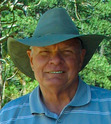Evan E. Filby's Blog: South Fork and More, page 111
August 21, 2013
Stockman and Legislator William Allison [otd 8/22]
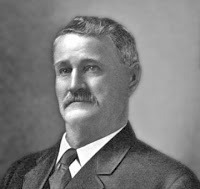 W. B. Allison. H.T. French photo.Salubria stockman and Idaho legislator William B. Allison was born August 22, 1845 in Glasgow, Ohio, about 60 miles south of Akron. The family moved twice before coming to Idaho: to Illinois in 1854, and Iowa the following year.
W. B. Allison. H.T. French photo.Salubria stockman and Idaho legislator William B. Allison was born August 22, 1845 in Glasgow, Ohio, about 60 miles south of Akron. The family moved twice before coming to Idaho: to Illinois in 1854, and Iowa the following year. In 1863, the Allison’s settled in the Boise Valley, where William’s father Alexander took up a homestead. He apparently also filed a homestead through one of his sons because the Illustrated History said his farm encompassed 320 acres....
Published on August 21, 2013 23:09
Dr. Edward E. Maxey and Research on Spotted Fever [otd 8/21]
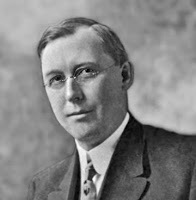 Dr. Maxey. H. T. French photo.Prominent Boise physician Edward E. Maxey, M.D, was born August 21, 1867, in Irvington, Illinois, about sixty miles east of St. Louis, Missouri. His father, also a physician, fought in the Civil War and then moved the family to Caldwell in 1887.
Dr. Maxey. H. T. French photo.Prominent Boise physician Edward E. Maxey, M.D, was born August 21, 1867, in Irvington, Illinois, about sixty miles east of St. Louis, Missouri. His father, also a physician, fought in the Civil War and then moved the family to Caldwell in 1887.In 1891, Edward graduated from the College of Physicians and Surgeons in Chicago, and followed up with post-graduate work.
After his studies, he returned to Caldwell to open a practice. While there, he acted as a Resident...
Published on August 21, 2013 00:09
August 20, 2013
Wildfire -- "The Big Burn" -- Ravages North Idaho [otd 8/20]
On August 20, 1910, serious forest fires in and around Northern Idaho “blew up” into arguably the worst wildfire in U. S. history. More than anything else, weather conspired to set the stage for this catastrophe, starting as winter rolled into spring. April brought record temperatures to the Bitterroot Range along the Idaho-Montana border.
May … June … July … barely any rainfall and unprecedented heat turned the great forests into gigantic tinderboxes. By early August, scores of fires burned i...
May … June … July … barely any rainfall and unprecedented heat turned the great forests into gigantic tinderboxes. By early August, scores of fires burned i...
Published on August 20, 2013 00:09
August 19, 2013
War News: Bombardment at Charleston Essentially Closes Port to Blockade Runners
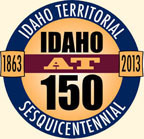 Pacific Coast newspapers had much to say about the course of the Civil War, based on dispatches sent on October 19, 1863. In The Oregonian, a report said, “The Weehawken and the Patapsco are in position to keep Wagner and Gregg quiet. … Gen. Gilmore [sic] announces that the work thus far has been entirely satisfactory, and that Sumter has been damaged greatly.”
Pacific Coast newspapers had much to say about the course of the Civil War, based on dispatches sent on October 19, 1863. In The Oregonian, a report said, “The Weehawken and the Patapsco are in position to keep Wagner and Gregg quiet. … Gen. Gilmore [sic] announces that the work thus far has been entirely satisfactory, and that Sumter has been damaged greatly.”“Wagner” and “Gregg” refer to Fort Wagner and Battery Gregg, built at the entrance to the harbor for Charleston, South Carolina. Major...
Published on August 19, 2013 00:30
Philo Farnsworth, Inventor of the First Practical Television Recorder [otd 8/19]
Inventor and television pioneer Philo T. Farnsworth was born August 19, 1906 in Beaver County, Utah. The family moved to a farm near Rigby, Idaho during World War I. There, Philo set off on the path that would earn him the designation as “the father of television.”
Farnsworth accomplished much in his lifetime, despite seemingly endless fights in patent court. The whole story is beyond the scope of this article (but is readily available). Here, I will focus on a few interesting points.
A stack o...
Farnsworth accomplished much in his lifetime, despite seemingly endless fights in patent court. The whole story is beyond the scope of this article (but is readily available). Here, I will focus on a few interesting points.
A stack o...
Published on August 19, 2013 00:01
August 18, 2013
Desert Land (Carey) Act Signed to Encourage Irrigation in the West [otd 8/18]
On August 18, 1894, President Grover Cleveland signed the Desert Land Act of 1894, better known as the Carey Act. Sponsored by Wyoming Senator Joseph M. Carey, the Act was meant to improve the success rate for the settlement of the public lands. The law specifically addressed the millions upon millions of acres in the western states that required irrigation for productive farming – the so-called “arid lands.”
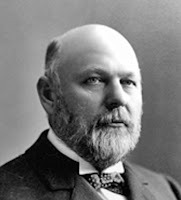 Joseph M. Carey.
Joseph M. Carey.
Wyoming State Archives.
Individuals and irrigation cooperatives had al...
 Joseph M. Carey.
Joseph M. Carey.Wyoming State Archives.
Individuals and irrigation cooperatives had al...
Published on August 18, 2013 00:03
August 17, 2013
Mountain Man, Explorer, and Survivor John Colter [otd 8/17]
On August 17, 1806, discharged Army Private John Colter headed up the Missouri River with his two new partners, Forest Hancock and Joseph Dickson. Captains Lewis and Clark had released him early from his enlistment because the Corps of Discovery no longer needed him. Clark wrote, “We were disposed to be of Service to any one of our party who had performed their duty as well as Colter had done.”
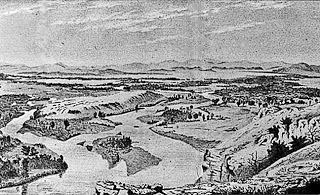 Early Three Forks sketch. Montana Historical Society.
Early Three Forks sketch. Montana Historical Society.
Hancock and Dickson had met the Expedition a fe...
 Early Three Forks sketch. Montana Historical Society.
Early Three Forks sketch. Montana Historical Society.Hancock and Dickson had met the Expedition a fe...
Published on August 17, 2013 00:09
August 16, 2013
Captain Relf Bledsoe: Indian Fighter, Businessman, Prospector, Mine Manager ... and More [otd 8/16]
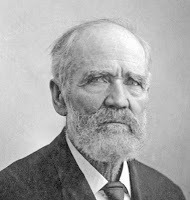 Capt. Beldsoe. Idaho State Historical SocietyIndian fighter, business leader, and public servant Relf Bledsoe was born August 16, 1832 in Henderson County, Kentucky. That small county is located along the Ohio River, about a hundred miles west and a bit south of Louisville.
Capt. Beldsoe. Idaho State Historical SocietyIndian fighter, business leader, and public servant Relf Bledsoe was born August 16, 1832 in Henderson County, Kentucky. That small county is located along the Ohio River, about a hundred miles west and a bit south of Louisville.The family resettled first to Missouri and then Texas. In 1850, Bledsoe moved to California. He apparently had a knack for mining management, because by the age of twenty-two, he had attained a position as a mine Superinten...
Published on August 16, 2013 00:07
August 15, 2013
New Road to Idaho Planned, Gold in the Palouse?
 On August 15, 1863, The Oregonian published a brief item about the Boise Road Company. It said, “The following gentlemen were elected directors at the meeting held at the Dalles on Wednesday, for the purpose of organizing the company: Wm. C. Laughlin, J. R. Robbins, D. M. French, O. S. Savage, Chas. Miller, N. H. Gates and W. Nix.”
On August 15, 1863, The Oregonian published a brief item about the Boise Road Company. It said, “The following gentlemen were elected directors at the meeting held at the Dalles on Wednesday, for the purpose of organizing the company: Wm. C. Laughlin, J. R. Robbins, D. M. French, O. S. Savage, Chas. Miller, N. H. Gates and W. Nix.”A bit over a week earlier, backers of the Boise Road Company had canvassed people in The Dalles and had collected $4,500 in just “a few minutes.” At that point, the...
Published on August 15, 2013 00:30
First Documented Visit to, and Sketch of, (Renamed) Shoshone Falls [otd 8/15]
On August 15, 1849, a guide led two men from a column of U. S. Army Mounted Rifles to see a great waterfall on the Snake river, three to four miles northeast of today’s Twin Falls, Idaho. They later told their commander that the huge falls compared favorably to Niagara Falls. (The falls are, in fact, about 45 feet higher than Niagara, although not as wide.)
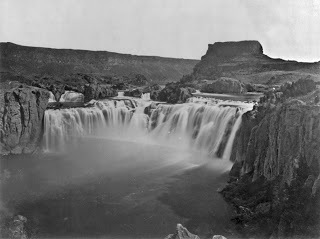 Shoshone Falls, ca. 1868. Library of Congress.
Shoshone Falls, ca. 1868. Library of Congress.
At that time, the feature was known as “Canadian Falls,” a name picked by early trappers or...
 Shoshone Falls, ca. 1868. Library of Congress.
Shoshone Falls, ca. 1868. Library of Congress.At that time, the feature was known as “Canadian Falls,” a name picked by early trappers or...
Published on August 15, 2013 00:09
South Fork and More
As an author's vehicle, this blog will include my thoughts on the writing process, supplemental information about my books, and "status"updates on current projects.
My long-time blog -- the South Fork As an author's vehicle, this blog will include my thoughts on the writing process, supplemental information about my books, and "status"updates on current projects.
My long-time blog -- the South Fork Companion -- leans heavily toward Idaho history. In particular, I post an "On This Day" (OTD) item with an Idaho "spin" for every day of the year. I originally tried to have the system bring over the entire item, but the transfer does not handle the photo captions well. That's not good, because I generally include two images with each of my OTD posts. ...more
My long-time blog -- the South Fork As an author's vehicle, this blog will include my thoughts on the writing process, supplemental information about my books, and "status"updates on current projects.
My long-time blog -- the South Fork Companion -- leans heavily toward Idaho history. In particular, I post an "On This Day" (OTD) item with an Idaho "spin" for every day of the year. I originally tried to have the system bring over the entire item, but the transfer does not handle the photo captions well. That's not good, because I generally include two images with each of my OTD posts. ...more
- Evan E. Filby's profile
- 2 followers


